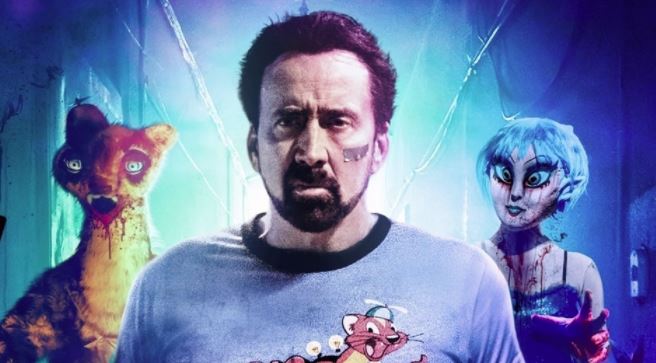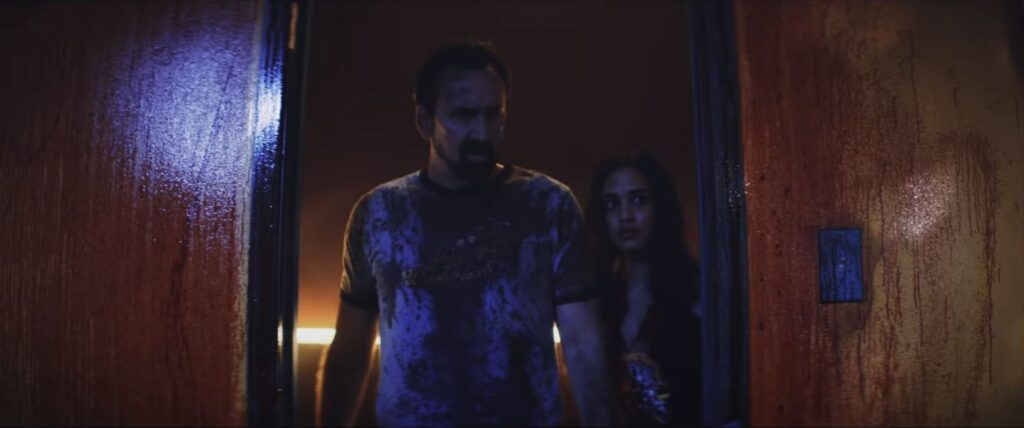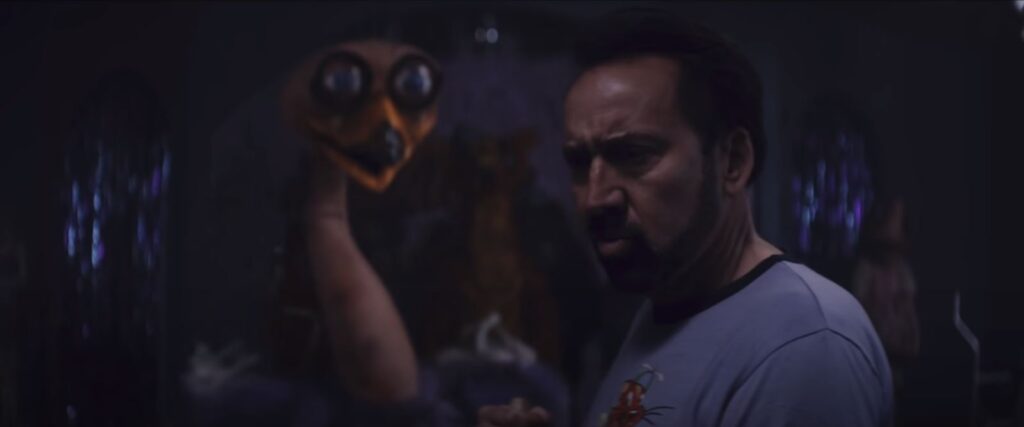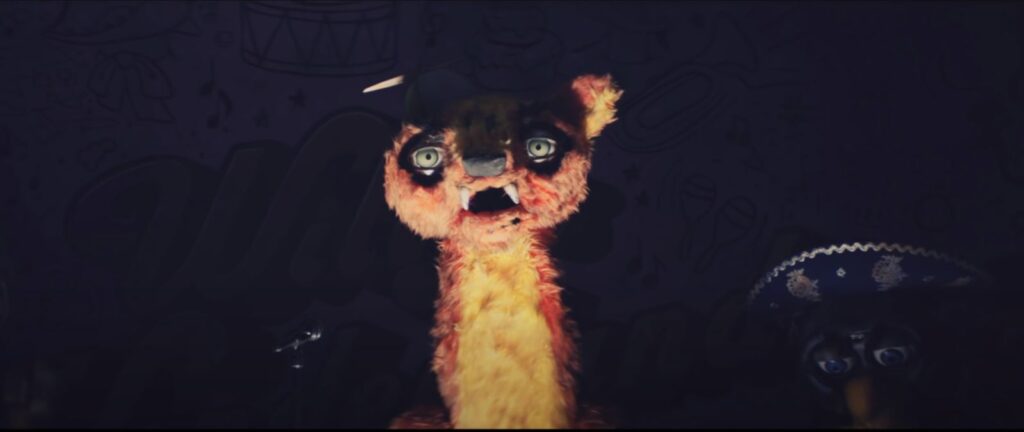
By Matthew Essary (Twitter: @WheelsCritic)
Nicolas Cage is a complicated performer that inspires extreme reactions. Bring up his name in any online space and a bombardment of comments will follow that swing wildly from lavish praise to dismissal and outright mockery. The “memes” will (of course) make an appearance and someone will crack a joke about back taxes being owed or a drug habit needing fuel. The ones who praise him will fire off lists of beloved films he was part of and the awards he’s won. Either way, the passionate responses from all sides show that no matter where they sit on the “love/hate” spectrum, people care about Nicolas Cage. His presence can take a film that would be readily forgotten, or possibly not even be produced, and single-handily make it into something both his critics and his fans want to see. That is a unique power to have as an actor. When that quality gets paired with a really outlandish premise, magic can happen. WILLY’S WONDERLAND, Cage’s latest, is certainly weird but is it a misfire or magic? Like, the man himself, it’s complicated.
WILLY’S WONDERLAND is, at first glance, a horror movie that basically has the premise of “what if we did a CHILD’S PLAY movie but instead of one murderous possessed doll, we had the entire ‘Rock-afire Explosion’ animatronic band from Showbiz Pizza try to kill a bunch of kids?” That premise is already pretty wacky by itself but somewhere along the way the idea became that these evil, possessed robots would meet their match in a silent drifter who not only wasn’t scared of them but was surprisingly adept at bashing their mechanical heads in. So, WILLY’S WONDERLAND sits at a strange crossroads of horror, comedy, and action. At the center of that intersection is the singular presence of Nicolas Cage.

The film opens with Cage’s nameless, silent protagonist speeding through a rural community in a sports car when suddenly his tires blow out and he is left stranded with a mechanic demanding cash upfront to fix the damaged car. Not having any cash, he’s offered a deal by a local businessman. Spend the night cleaning up “Willy’s Wonderland”, a defunct children’s restaurant and arcade that has fallen into disrepair, and the car repairs will be paid for. Naturally, this is all a setup to lure unsuspecting victims to the killer robots in an effort to keep the monsters docile and away from the local residents.
Within minutes of being left alone, locked in the dilapidated restaurant, the first robot springs to life and attacks Cage’s protagonist and it becomes clear that WILLY’S WONDERLAND is not concerned with building tensions as much as it is trying to give a “midnight movie” audience what it thinks they want. The robot, an ostrich that is equal parts silly looking and sinister, draws first blood and in that moment, the camera zooms into Cage’s face and he flashes a confident, crazy-eyed grin that lets the machine know its days are numbered and you can feel the pause where a primed theater full of Cage fans are expected to go bananas as he proceeds to decimate the demonic machine in a grisly fashion.

Several of the moments in WILLY’s WONDERLAND feel this way. Every time the hero bests one of the killer robots it’s done in a way where he dramatically pulls it apart, the oil of the machine flying like blood in a “Mortal Kombat” game. The scenes feel tailor-made for the cheers of a raucous crowd that then laughs uproariously when Cage then passively returns to either cleaning the restaurant or playing pinball on his breaks. It feels as if the films hopes that the audaciousness of those moments and Cage’s screen presence will obscure the sparse interiors of the sets or the blatant green screen shots during multiple moments that take place outside Willy’s during the night… and it almost does. The scenes of Cage wrecking what are basically sports mascots are incredibly fun and satisfying. Unfortunately, there’s more to the film than that and what’s there is simply not good.
.
The film introduces a subplot involving a group of local teens, led by a girl named “Liv” (Emily Tosta), who know that Willy’s is an evil place and who are planning to burn it down. When they can’t get Cage to leave the building though they go in after him- not realizing he has the situation well in hand on his own. Here is where WILLY’s WONDERLAND makes its biggest misstep. Once the teens are in the building with Cage and they explain the film’s backstory to him, they stop being overly concerned about the murder-bots. They behave like stock teen characters in a cheap slasher film, waiting to be picked off by the robots or be rescued by the capable hero (when he’s not on a break from cleaning that is). It feels incredibly shoddy and every time the film cuts from Cage to a different character the film loses all momentum, and the pacing slows to a crawl. The scenes minus Cage actively make WILLY’S WONDERLAND less interesting and that’s a problem. It dilutes the film and leaves it feeling way more rote than it should. As the audience sits through these scenes, of boring teens behaving dumbly and getting slaughtered, while waiting for Cage to pop back up and curb stomp a monster into messy oblivion or disco dance while playing pinball, every flaw of the film is more readily apparent.

With all that being said though, Cage is still the focal point of the film and when he is on-screen, WILLY’S WONDERLAND delivers what it promised, a wild premise with one of film’s most unique actors, right in the thick of it, giving it his all. With a few script revisions, it might have been better able to support his efforts and made the film a better overall experience. As it stands now though, it’s a very flawed film that will have its staunch defenders and its harsh critics in equal measure, just like Nicolas Cage himself. (3/5)
To find out where this film is available to stream, click here: Just Watch
